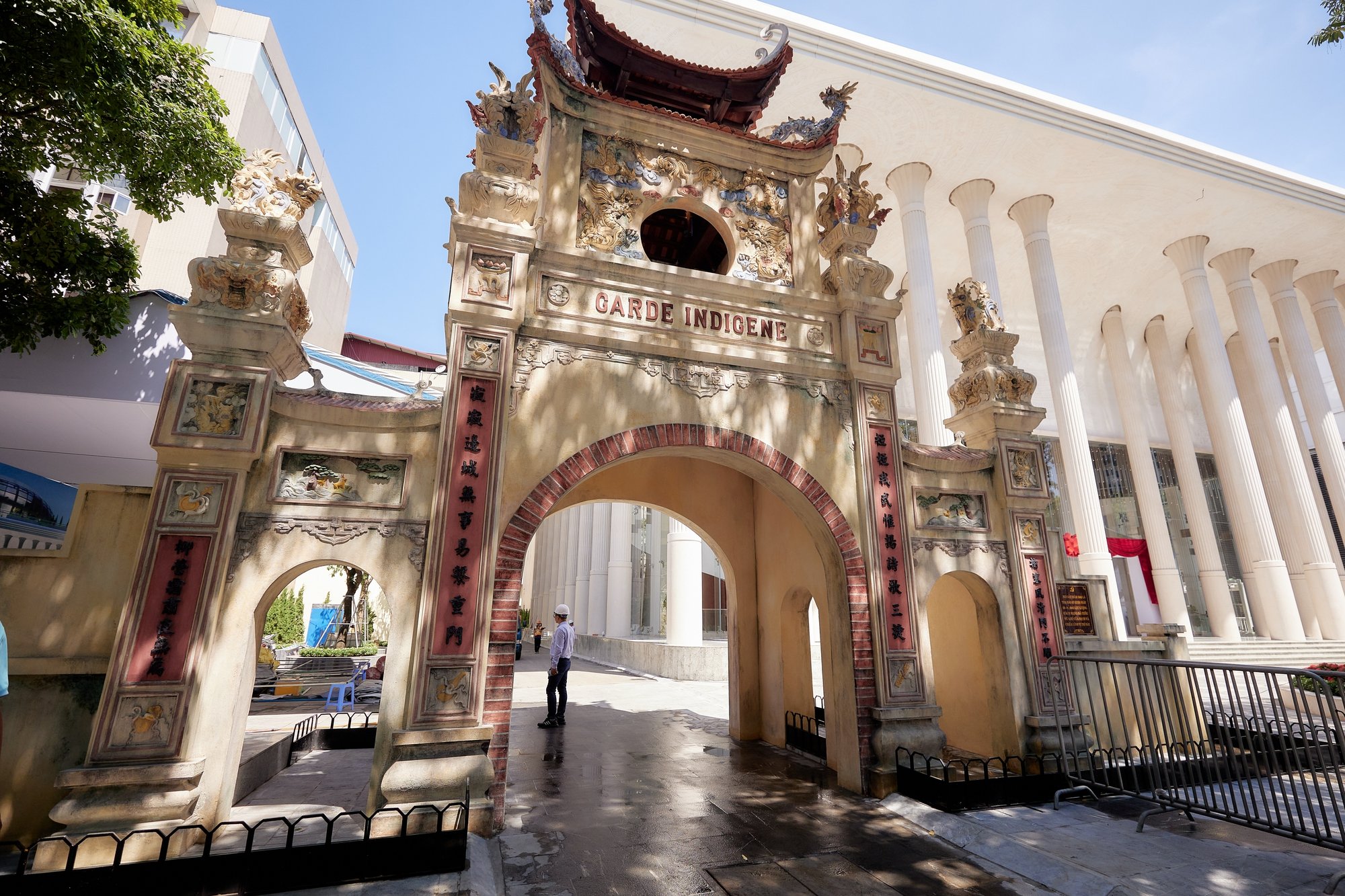
The Gate of Bao An Binh Camp is one of the rare remaining vestiges associated with the historical event of the August Revolution.
The Bao An Binh camp was formerly a green-clad soldier camp under the management of the French army. After the Japanese coup against France, this facility was renamed the Central Bao An Binh camp - an armed force ensuring domestic security. The gate of the Bao An Binh camp is one of the rare remaining vestiges associated with the historical event of the August Revolution, next to the August Revolution Square, house number 101 Tran Hung Dao, now the Vietnam Institute of Educational Sciences...
The barracks were built in the late 19th century, according to many historical documents, it was designed by French architect Henri Vidieu, who designed other famous architectural works such as the Governor's Palace, the Governor's Palace... The barracks are located on a large area, once a garrison for more than 1,000 soldiers, but to date, only a small gate remains, causing many people to mistakenly believe that this is the gate of an ancient temple.
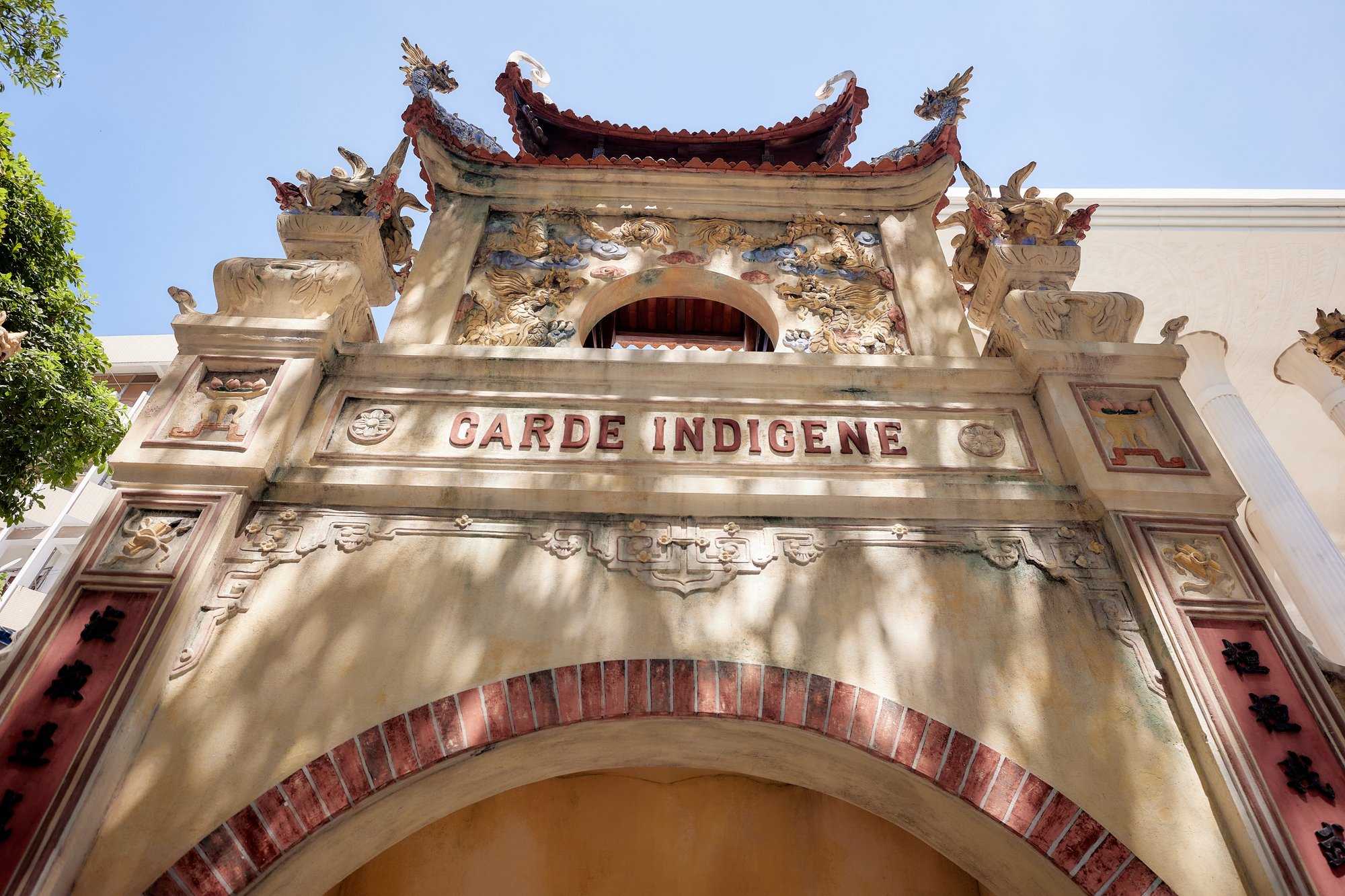
The architecture of the main gate is kept intact, along with the words "Garde Indigène"
During the days of the August Revolution, the Gate of the Bao An Binh Camp became a witness to the most important event in modern history. Here, 78 years ago, although Japan had surrendered, they remained motionless, waiting for the allies to take over. The Bao An Binh force was the biggest threat to the success of the General Uprising to seize power on August 19.
The leaders of the uprising at that time, led by Mr. Nguyen Quyet (later General, Vice President of the State Council of Vietnam), with the support of the masses, both persuaded and suppressed the Bao An Binh force with the power of spirit, aroused their patriotism, and encouraged them to support and join the revolutionary armed forces or return to their hometowns. Among them, the Bao An Binh military band unit joined the revolutionary ranks, the predecessor of the Military Band of the Vietnam People's Army today.
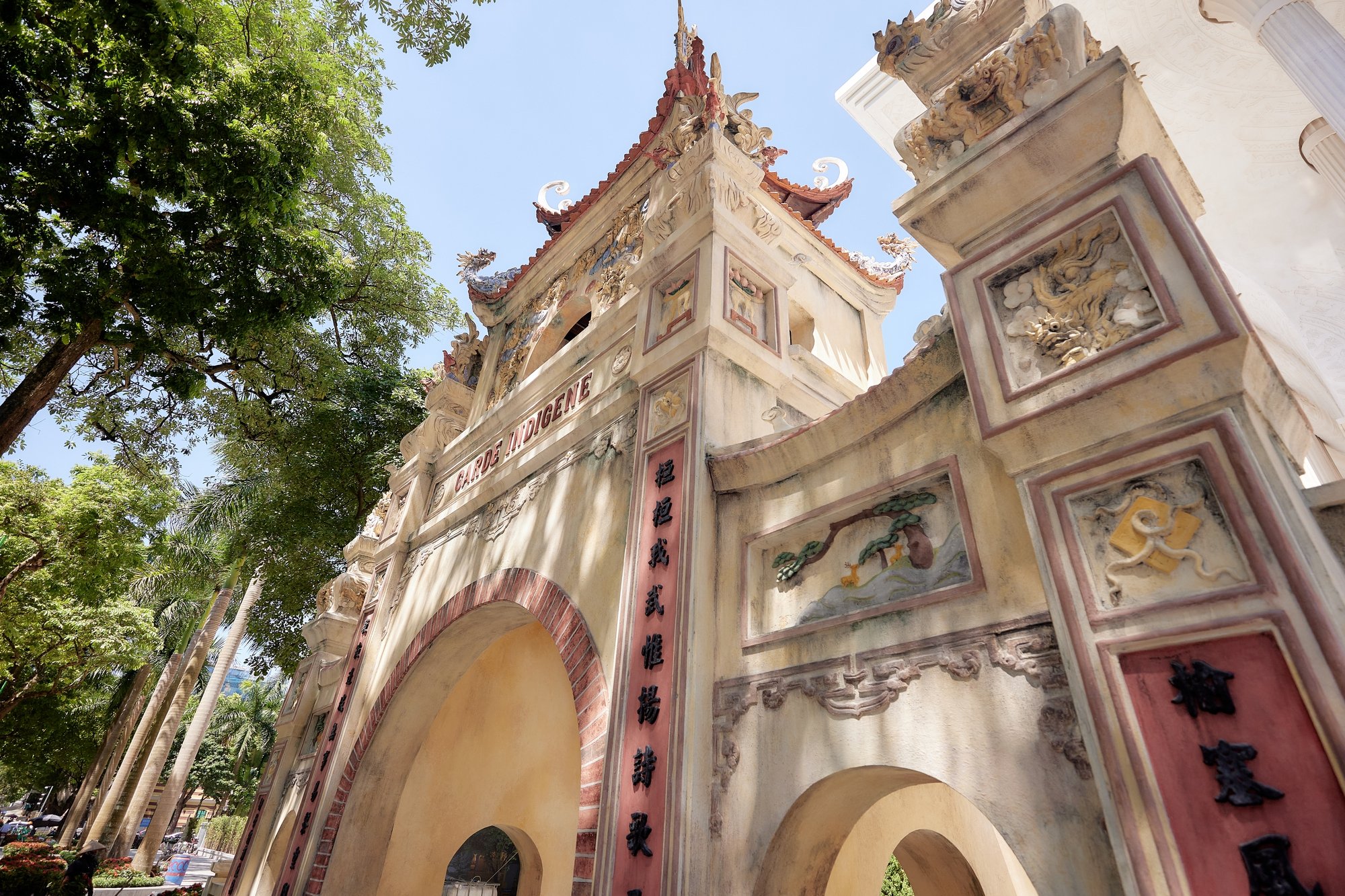
The gate of Bao An Binh Camp has become a witness to the most important event in modern history.
However, over time, the gate of the Bao An Binh Camp has seriously degraded while it is located right in the center of the capital, surrounded by new architectural works.
In April, the Ministry of Public Security and the Hanoi People's Committee held a consultation with experts to find a plan to restore and embellish revolutionary vestiges. After agreeing on the plan, the units proceeded to restore the gate of the Bao An Binh Camp, restoring it as close to the original state as possible in 1945.
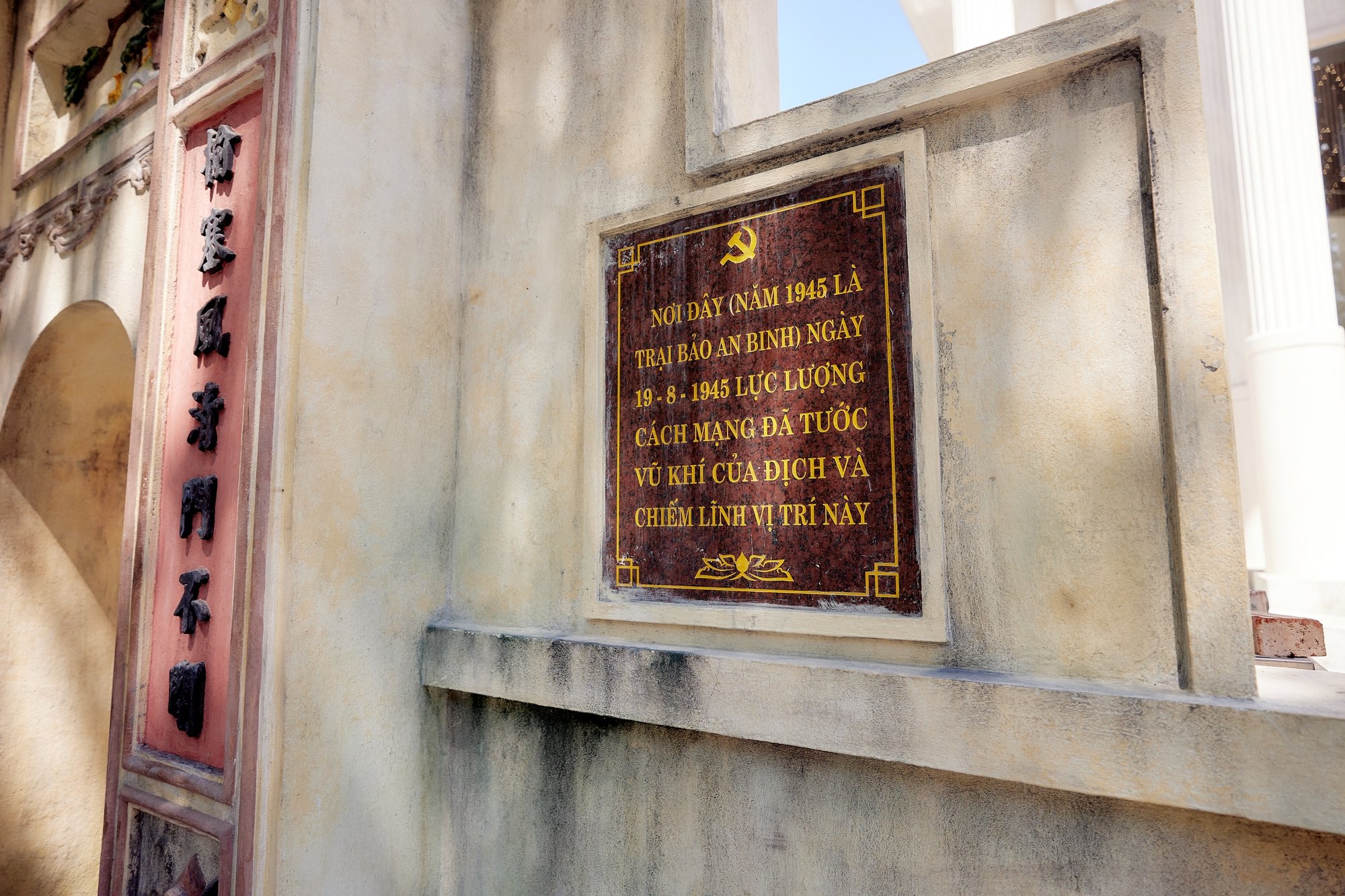
On the gate still hangs a sign that reads: “In 1945, this place was the Bao An Binh Camp. On August 19, 1945, the Revolutionary forces disarmed the enemy and occupied this position.”
The project was restored using traditional techniques and materials. Skilled and experienced craftsmen from traditional craft villages in the Northern Delta region were invited to participate in the restoration process.
Historian Duong Trung Quoc affirmed: “The restoration of the gate of Bao An Binh Camp demonstrates the dedication and responsibility to preserve historical values. Although the project is not large, its historical value is very high. I consider this to be a very valuable cultural highlight. The project also has the value of connecting the past - present with the future.”
Located next to the modern, newly inaugurated Hoan Kiem Theater, close to other cultural works in the center of the capital, the gate of the Bao An Binh Camp after being restored has contributed to creating a cultural complex, relics, and architecture rich in identity around Hoan Kiem Lake, contributing to promoting cultural tourism, honoring the awareness of preserving and protecting historical and cultural values.
Source link



![[Photo] Prime Minister Pham Minh Chinh receives Swedish Minister of International Development Cooperation and Foreign Trade](https://vphoto.vietnam.vn/thumb/1200x675/vietnam/resource/IMAGE/2025/5/12/ae50d0bb57584fd1bbe1cd77d9ad6d97)

![[Photo] Prime Minister Pham Minh Chinh starts construction of vital highway through Thai Binh and Nam Dinh](https://vphoto.vietnam.vn/thumb/1200x675/vietnam/resource/IMAGE/2025/5/12/52d98584ccea4c8dbf7c7f7484433af5)
![[Photo] Prime Minister Pham Minh Chinh works with the Standing Committee of Thai Binh Provincial Party Committee](https://vphoto.vietnam.vn/thumb/1200x675/vietnam/resource/IMAGE/2025/5/12/f514ab990c544e05a446f77bba59c7d1)









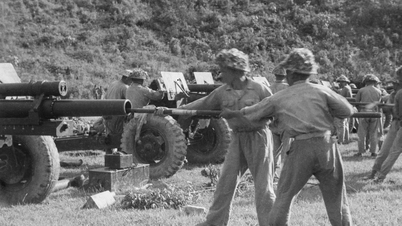


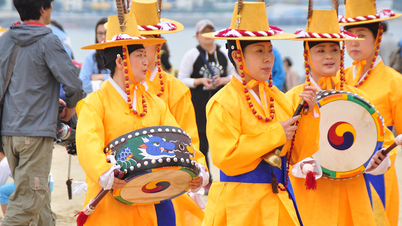
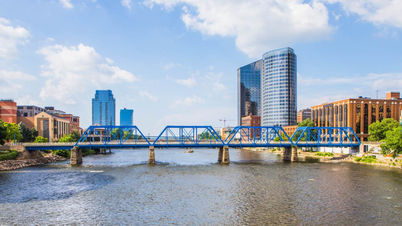



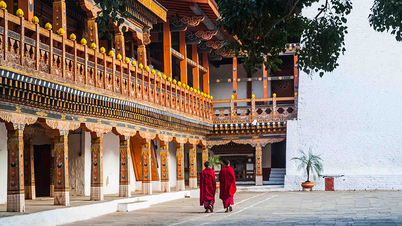






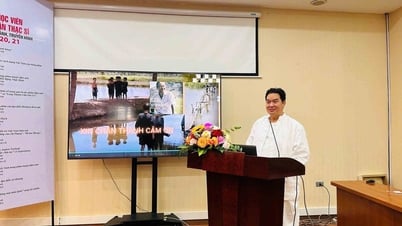
























































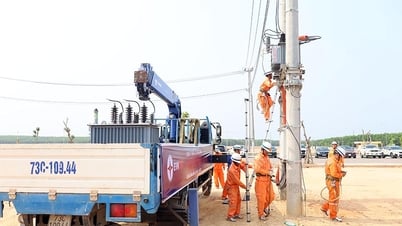










Comment (0)